ANMYEON, South Korea, March 25, 2011 -- More than 800 U.S. and Republic of Korea Soldiers, Marines, Sailors and ROK Service Corps personnel joined forces for the Combined/Joint Logistics Over-the-Shore training exercise at Anmyeon Beach, March 23.
Combined Joint Logistics Over-the-Shore, or C/JLOTS, is the name of the drill conducted on Korea's west coast. The purpose of C/JLOTS is to establish a seaside logistics point in an area without facilities.
Just like all military operations, the first work priority is to establish security. The United States Navy's Maritime Expeditionary Security Squadron 7 took the lead and set up perimeter security.
"C/JLOTS is a fantastic opportunity for Maritime Expeditionary Security Squadron 7 Sailors to conduct combined security operations alongside ROK forces," Navy Lt. Joseph Palchak said.
ROK Marines provided security with the U.S. Navy, emphasizing the purpose of the drill.
"This exercise is defensive in nature. The purpose of this exercise is to demonstrate the resolve between the U.S. and ROK alliance," said Brig. Gen. Aundre F. Piggee, assistant chief of staff for logistics at United States Forces Korea. "The training that we receive and that our troopers receive will only continue to improve with the combat readiness with both the ROK and U.S. forces."
The exercise allowed the joint forces to gauge their abilities to perform coastline missions such as transporting equipment and fluid ashore from ships to the mainland, conducting security operations and providing logistical support.
"What the Koreans did today was move palletized cargo and vehicles ashore. And then on our side, what we wanted to be able to demonstrate was bringing fluids ashore from a ship that was anywhere from four to eight miles off the beach," said Marine Col. Scott Carhart, C/JLOTS deputy.
Being assigned specific roles and missions allowed forces from both countries to work on and strengthen their interoperability in the projected scenarios.
"It's their land and obviously it's our goal to help strengthen their military and ability to defend their land on their own," Carhardt said. "Anytime we can share our lessons learned, knowledge and experience we have with them, it helps them achieve their mission."
Carhart said the exercise was not able to be completed without its share of difficulties. This was the first time this exercise was conducted on Korea's west coast.
"The (sea) floor drops off much quicker on the east coast. You can see what happens here when the tide runs on the west coast. It's much shallower here," Carhart said about the purposely beached vessels used during the exercise.
"The sea-state and turbulence on the beach are much different and there tends to be a much higher sea-state here on the west coast than on the east coast," Piggee said.
Along with the coordination portions of bringing multiple branches from two countries together for the exercise, logistics played a major role in making sure the exercise was able to commence.
According to Maj. Brian Lundell, 403rd Army Field Support Battalion-Northeast Asia operations officer, most of the equipment, vehicles and resources used for the joint mission were brought from various places throughout the Korean peninsula, however, the Inland Petroleum Distribution System used to move fluids from ships to shore came from the Sagami Depot in Japan.
The 13 containers storing five miles of piping got shipped to Busan and then relocated to Camp Carroll. Once the equipment reached the training facility, the 108th Petroleum Support Company, the 412th Engineer Command and a company of KSC engineers spent the week prior laying out the piping system.
People worked through harsh weather conditions to lay out each section of the pipe, each measuring 19 feet long and weighing 115 pounds.
"We have absolutely great Soldiers out here working day and nights, on call 24 hours-a-day," said Capt. Tyler Weightman, deputy commander for the Logistics Support Area, which was operated by 194th Combat Sustainment Battalion, 501st Sustainment Brigade. "We have people who can think outside the box."
Weightman and his 501st SBDE Soldiers were able to establish the logistical support area even with self-imposed communication limitations during the setup to help other units assisting with operations in Japan.
"It was a bit of a hurdle for us to overcome, but we made it happen," said Spc. Emmanuel Kim, 501st Sustainment Brigade. "I'm in the business of getting things done, and business is good."
With everything set up and working at the training location, units performed each task in order to complete the mission while VIPs and media watched from the beach as the training was completed.
"The exercises are always important. One of the goals here was certainly to send a message that we have the ability to do it on the west coast," Carhart said.
This exercise sets the basis for future missions held along Korea's west coast, and due to the complexity of its pieces, allows leaders to evaluate their performance and work on improvements.
"The next CJLOTS has to be based on the After Action Review. The AAR is very important because that's the link because the next one might not be next year. It may be five years from now," Weightman said
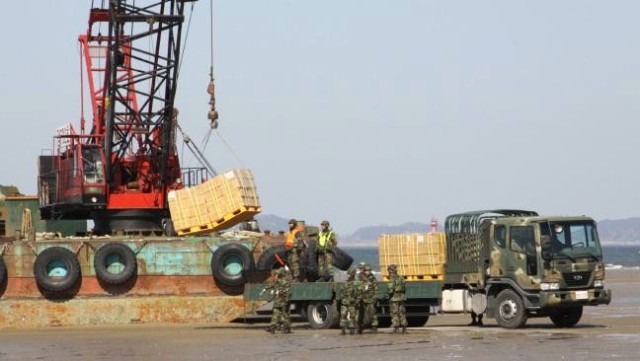
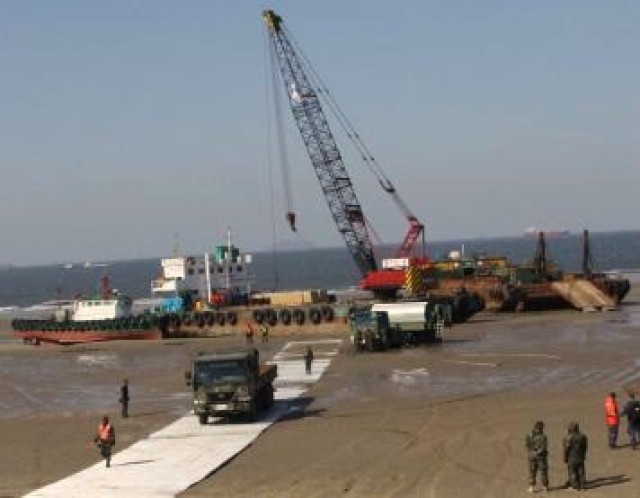
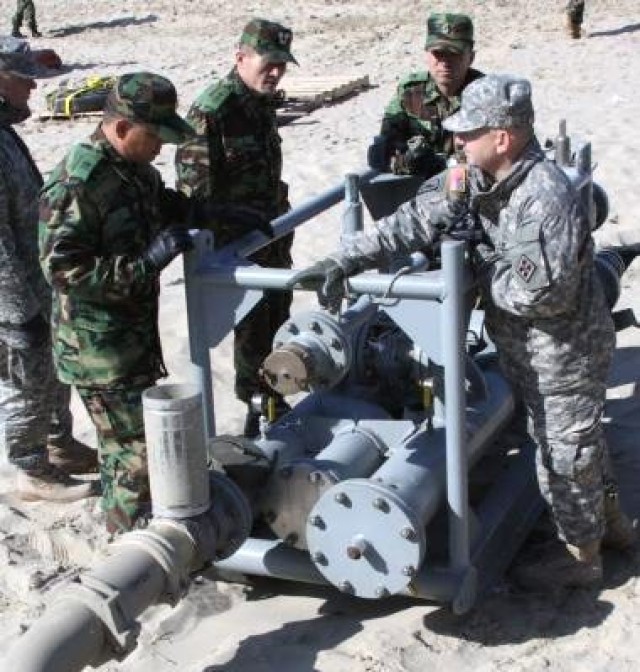
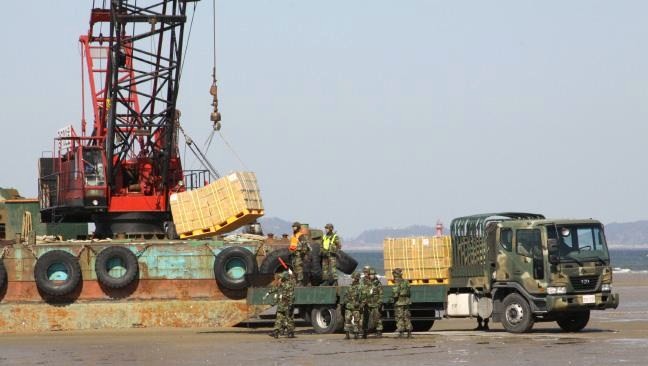
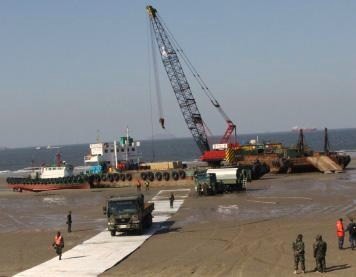
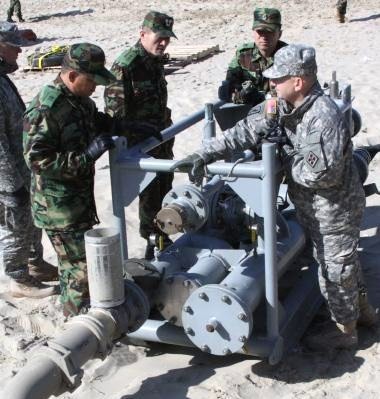
Social Sharing